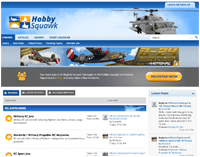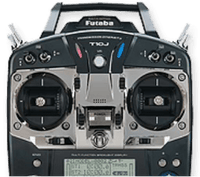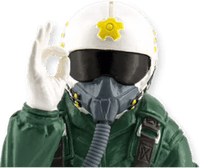Reflex Flight Simulator Releases Free Software Update For Version 6.0
by Motion RCREFLEX XTR² is a groundbreaking RC Flight Simulator from German software developers Reflex Simulation. For over 20 years, Reflex Simulation has been a leading innovator in RC Flight Simulation software. In the early 2000's Reflex Simulation introduced the first flight simulator with photo-realistic scenery; a feature that is now common in all major flight sims. The early version of REFLEX was also the first flight simulator that could be connected to a real RC transmitter.
REFLEX XTR² recently released a free software update for their Version 6.0. The following are all of the improvements:
- The mouse can now be controlled remotely, so that the program can be operated conveniently via the connected transmitter. The simulation can be started and stopped by double-clicking the assigned transmitters push button. The configuration is done via the new dialog "Mouse remote control" of the "Radio" menu.
- The simulation can now also be started by remote control via a short throttle or pitch pulse.
- The simulation now also accommodates human movements of the model pilot and thus appears even more alive and natural. The intensity of the effect can be adjusted via the simulation parameter "Imitate Human Motion" on the "Camera" tab.
- Dragging the direction of view with the mouse as well as zooming in/out with the mouse wheel has been improved and supplemented by an inertia effect.
- On systems with touch screen (e.g. Tablet PC), it is now possible to drag the direction of view and zoom in/out via multi-touch gestures.
- The user can now intuitively touch and move the selected model by mouse or touch gesture. The physically correct behavior of the model provides an even more convincing and immediate experience.
- When using the Hover and Torque trainer, a 6x6 meter area is marked on the airfield, in which the model is to be maintained.
- The effective prevention of pixel flicker has improved the rendering quality of models outside of the near range.
- Also in Virtual Reality mode the simulation now continues after a crash, even if the model is only limited airworthy. Emergency landings and auto rotation procedures can therefore be trained more effectively.
- Various dialog windows have been revised to ensure a pleasant and smooth user experience, especially if the Windows settings under "System"/"Display"/"Scale and layout"/"Change the size of text, apps, and other items" were set higher than 100%.
- The radio display can now be scaled more easily and also snaps centered.
- When recalling certain dialogs, the last parameter changed is automatically re-selected, making it easier to adjust individual parameters.
- The simulation now always starts with the rpm that corresponds to the respective position of the throttle stick, flight mode or auto-rotation switch.
- Ground contact of propellers and rotors are now simulated more accurately.
- The helicopter simulation now also considers a possible imbalance in the main rotor system.
- The model context menu has been extended by the new functions "Transfer model to initial position" and "Reerect model".
- The user experience has been improved by displaying a splash screen immediately after program launch.
- If an attempt is made to make changes to the general channel assignment for a model with model-specific channel assignment, a new message box informs that the changes will have no effect on the current model.
- Several bug fixes and performance optimizations have been made.
For more information view the product page here.
Get the latest from Motion RC sale and product announcements
You can unsubscribe at any time!

Hobby Squawk Community Forum
visit forum
RC Knowledge Blog
visit blog
Guidance & advice for beginners
Find out more- Choosing a selection results in a full page refresh.
- Press the space key then arrow keys to make a selection.
